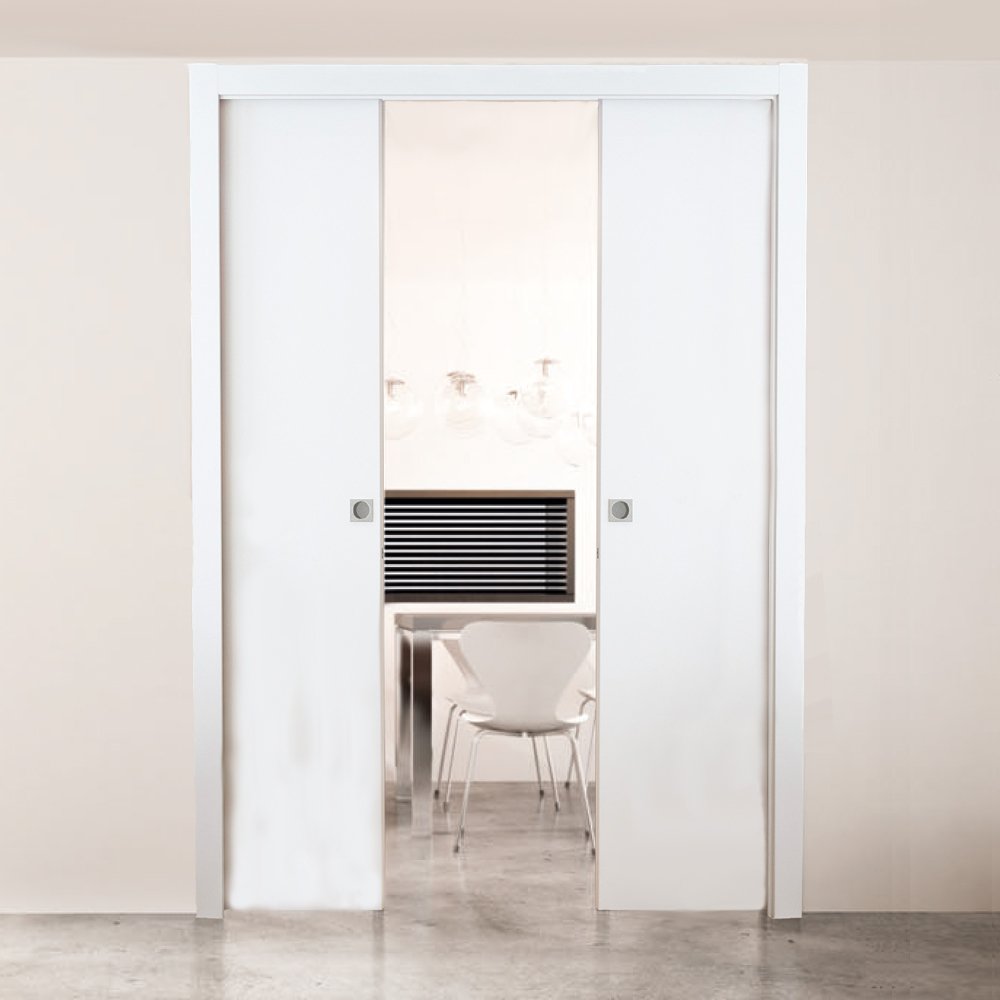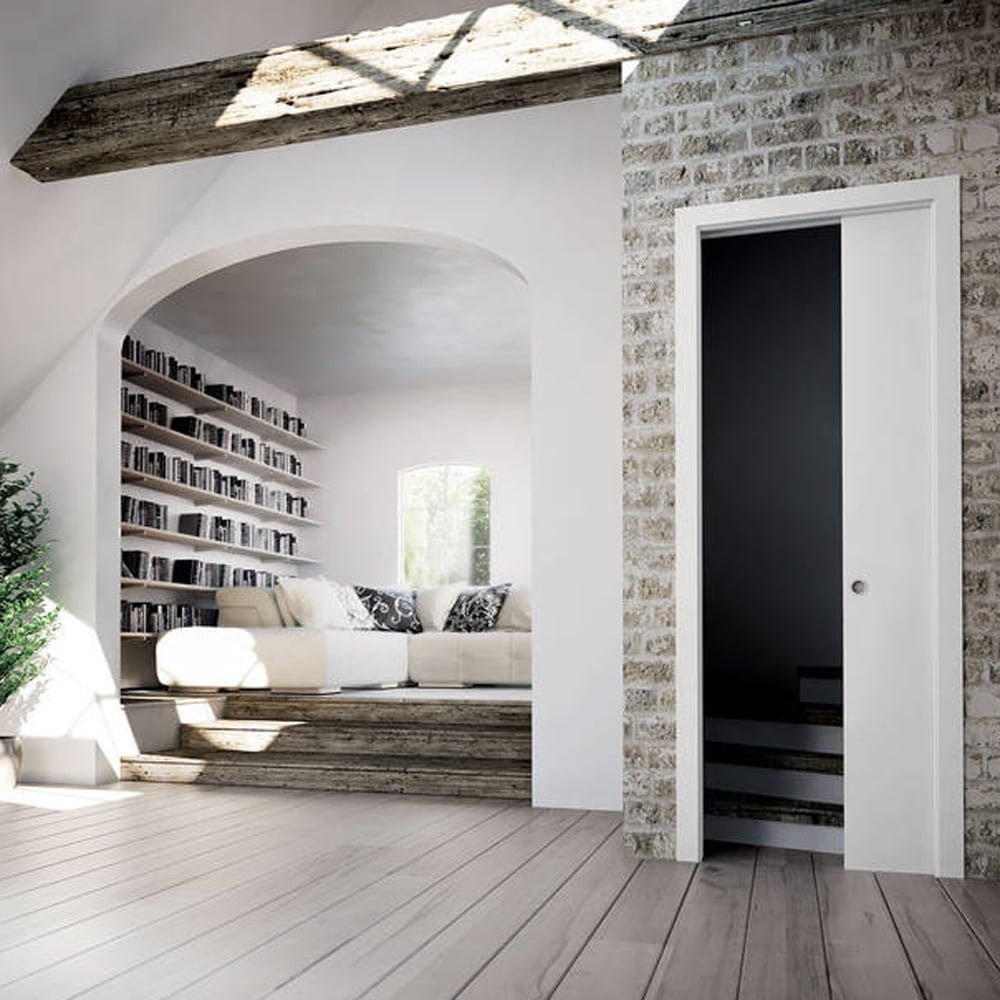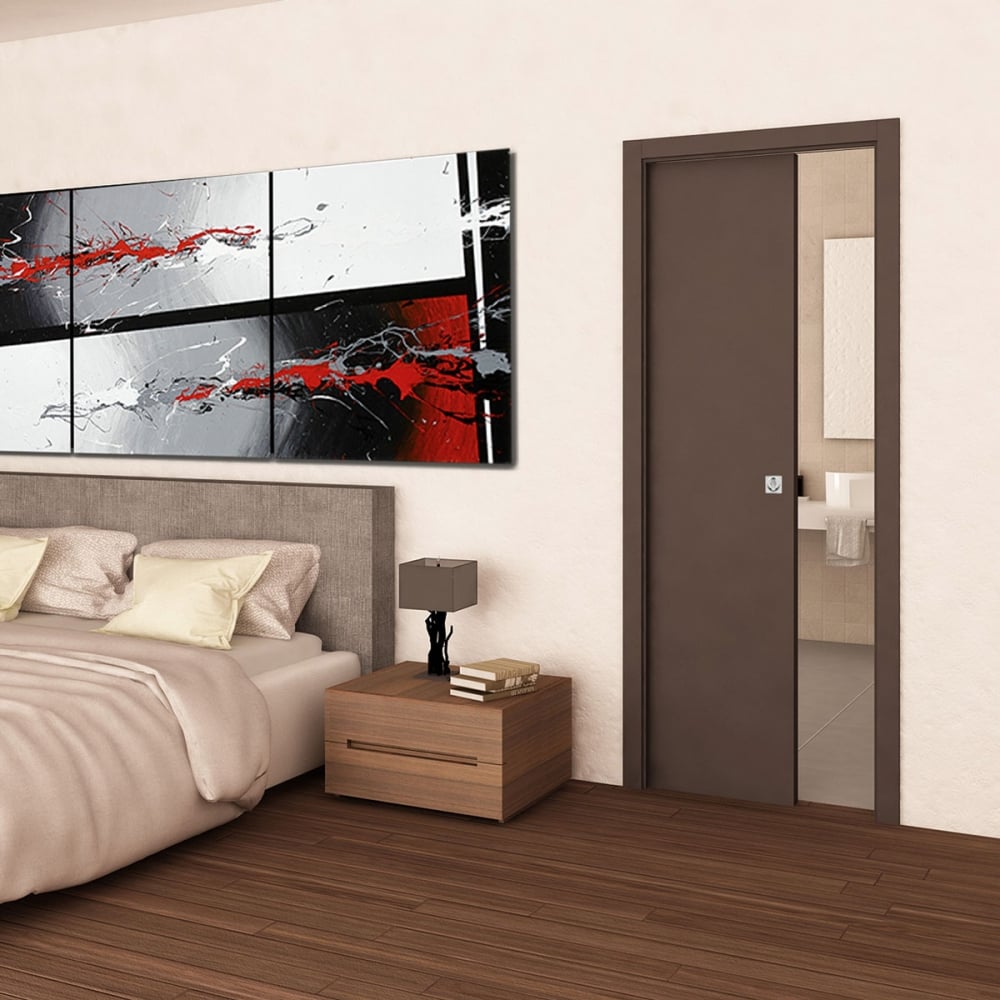As property prices have risen, the amount of space you get for your money has decreased. This means that now more than ever it is crucial to maximise the amount of useable space in your home. Pocket doors are the latest in space-saving doors, but what are they and why are they so popular? Read on to find out more in Door Superstore’s guide to pocket doors.
Table of contents
- What are pocket doors?
- Why choose a pocket door?
- What you need to know before installing a pocket door
What are pocket doors?
A pocket door is a form of sliding door with a difference. Instead of the door sliding adjacent to the wall when opened, a pocket door enters a recess within the adjoining wall, completely disappearing from view when fully opened. So sliding internal doors are a great solution when it comes to saving space.
Why choose a pocket door?
Space-saving
As mentioned, pocket doors are a great way to save space in your home. The space that is normally required for traditional doors to open is no longer taken up when a pocket door is installed, meaning that you can maximise the available floor space. Additionally, the wall space that is normally hidden by a traditional open door is available to display art or hang a mirror.
Pocket doors can also be used in a number of spaces where the space is limited, for example in bathrooms, storage spaces and wardrobes. In these circumstances, there is not always enough room for a traditional door to open completely.
Minimalist style
In minimalist homes and properties where crisp and clean lines are a key feature, pocket doors are the perfect match. Pocket doors come in a range of sleek and simple designs that will work well in contemporary properties when closed, and when the pocket doors are not being used they are hidden within the cavity, further adding to the minimalistic style.
Room dividers
Another option for pocket doors is to use them in pairs, or even groups of several doors to create a divider within a room that can completely disappear when not in use. This works well in open plan rooms, such as kitchen dining rooms or kitchen living rooms, because the room can be left as an open plan with no doors visible, or it can be divided into two separate rooms when required.

What you need to know before installing a pocket door
Door hardware is commonly sold separately from the door itself
However, this means that there is a wide selection of pocket doors available to choose from, as most doors can be hung on a pocket door hardware set. Additionally, different brands of pocket door hardware produce hardware that functions slightly differently, so make sure you have the most suitable hardware for your project.
When pocket doors are installed in pairs or multiples, there are several different installation options
Firstly, pocket doors can open in pairs, with a cavity on each adjoining wall to house them. Alternatively, both or all doors can retract into a single cavity, the cavity just needs to be wider to house multiple doors. Another option is to have two pocket doors adjacent to each other that lead to separate rooms, and both pocket doors can retract into the same cavity between the doorways.
Pocket doors do not fit tightly into the door frame
When considering a pocket door, it’s important to remember that pocket doors do not sit as tightly into the door frame as traditional doors. This means that they don’t have great acoustic insulation properties and smells and light may pass through the edges of the door when closed.
Retrofitting a pocket door is a challenge
Pocket doors are most commonly installed in new builds, because of the requirement to build a cavity within the adjoining wall to house the pocket door. Although not impossible, retrofitting a pocket door can be complex and costly. Existing wiring, pipework and other features can cause problems, and you’ll need to establish whether the wall is load-bearing or not. Additionally, if the adjoining wall is solid, creating a cavity within it can be incredibly challenging.
Want to know more about pocket doors, or have any questions about any of our other products? Feel free to call our team on 01752 422 501 and they will be more than happy to help with advice and guidance.

















